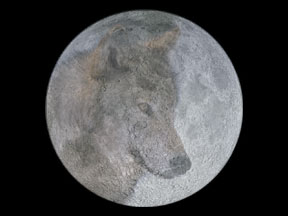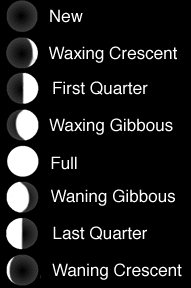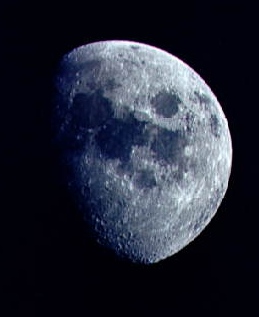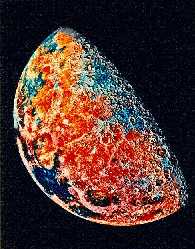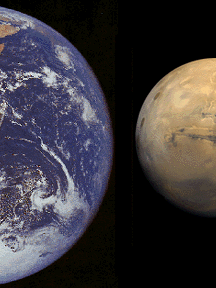Click on image for full size
Windows to the Universe original artwork by Randy Russell.
Related links:
Full Moon Names
You may have heard people refer to a Full Moon in the autumn as the "Harvest Moon" or the "Hunter's Moon". Native Americans in the eastern and northern parts of North America had special names for the Full Moon during each month of the year. European settlers in those regions adopted the Moon names used by the Native American groups, though most people today are only aware of a few of those names.
Hundreds of Algonquian tribes of Native Americans lived throughout what we now call New England, the areas around the Great Lakes, and most of Canada east of the Rocky Mountains. They gave names to the Full Moon that appeared each month, probably to help them keep track of the seasons as a sort of calendar. Prior to the arrival of the Europeans, most Algonquian peoples got food by hunting or fishing, though some also cultivated corn, beans, squash, and wild rice. The names they gave to the Full Moon are drawn from their hunting and farming lifestyles.
The table below lists the most common names for the Full Moon during each month of the year. Sometimes different groups used different names; for example the Snow Moon of February was also called the Hunger Moon. Since the Moon passes through all of its phases in slightly less than a calendar month, a Full Moon doesn't fall on the same day of a month each year, and it is even possible to have two Full Moons in a single month. Therefore, the matching of Moon names to months isn't exact. Names for the Moon do, however, roughly match up with events indicative of the seasons for which the Moon is named. Some people use a particular name for the Moon only when it is full, while others use a specific name for the Moon throughout the whole month associated with that name.
| Month | Moon name | Why that name? |
| January | Wolf Moon | Hungry wolf packs howled at night |
| February | Snow Moon | Heaviest snowfalls in the midst of winter |
| March | Worm Moon | Start of spring, as earthworms (and the robins that eat them!) began to appear |
| April | Pink Moon | Blooms of one of the earliest springtime flowers, the herb "moss pink" (also called wild ground phlox), appeared and became widespread |
| May | Flower Moon | Many species of flowers were abundant by this time |
| June | Strawberry Moon | Strawberries were ready to be picked and eaten |
| July | Buck Moon | New antlers of buck deer, coated with velvety fur, began to form |
| August | Sturgeon Moon | Sturgeon, a large fish found in the Great Lakes, were easily caught at this time of year |
| September | Harvest Moon | Farmers could continue harvesting until well past sunset by the light of the Harvest Moon |
| October | Hunter's Moon | Hunters tracked and killed prey by moonlight, stockpiling food for the coming winter |
| November | Beaver Moon | Time to set beaver traps before the swamps froze, to ensure a supply of warm winter furs |
| December | Cold Moon | The cold of winter sets in |


